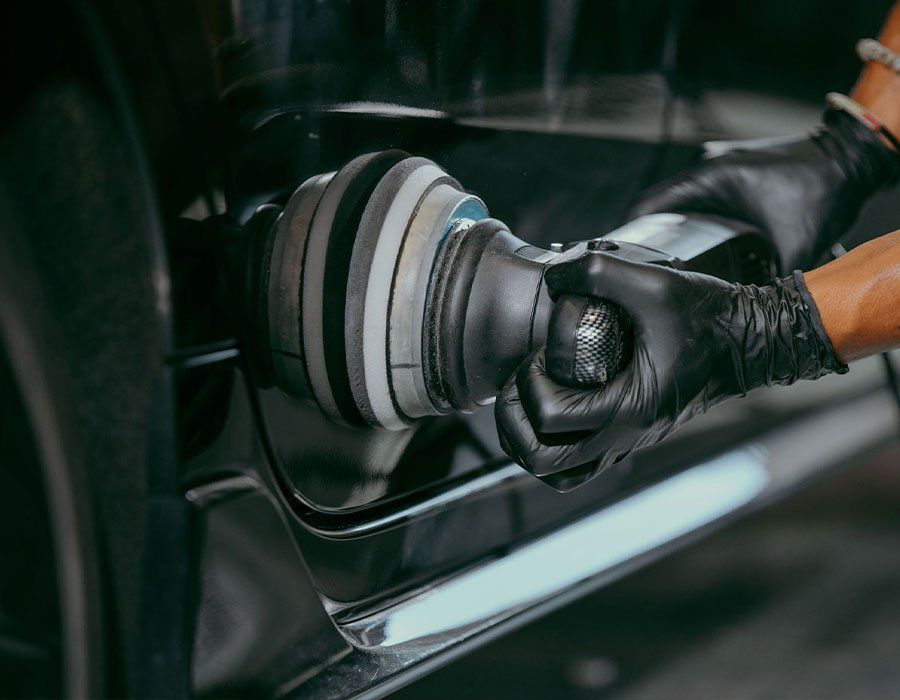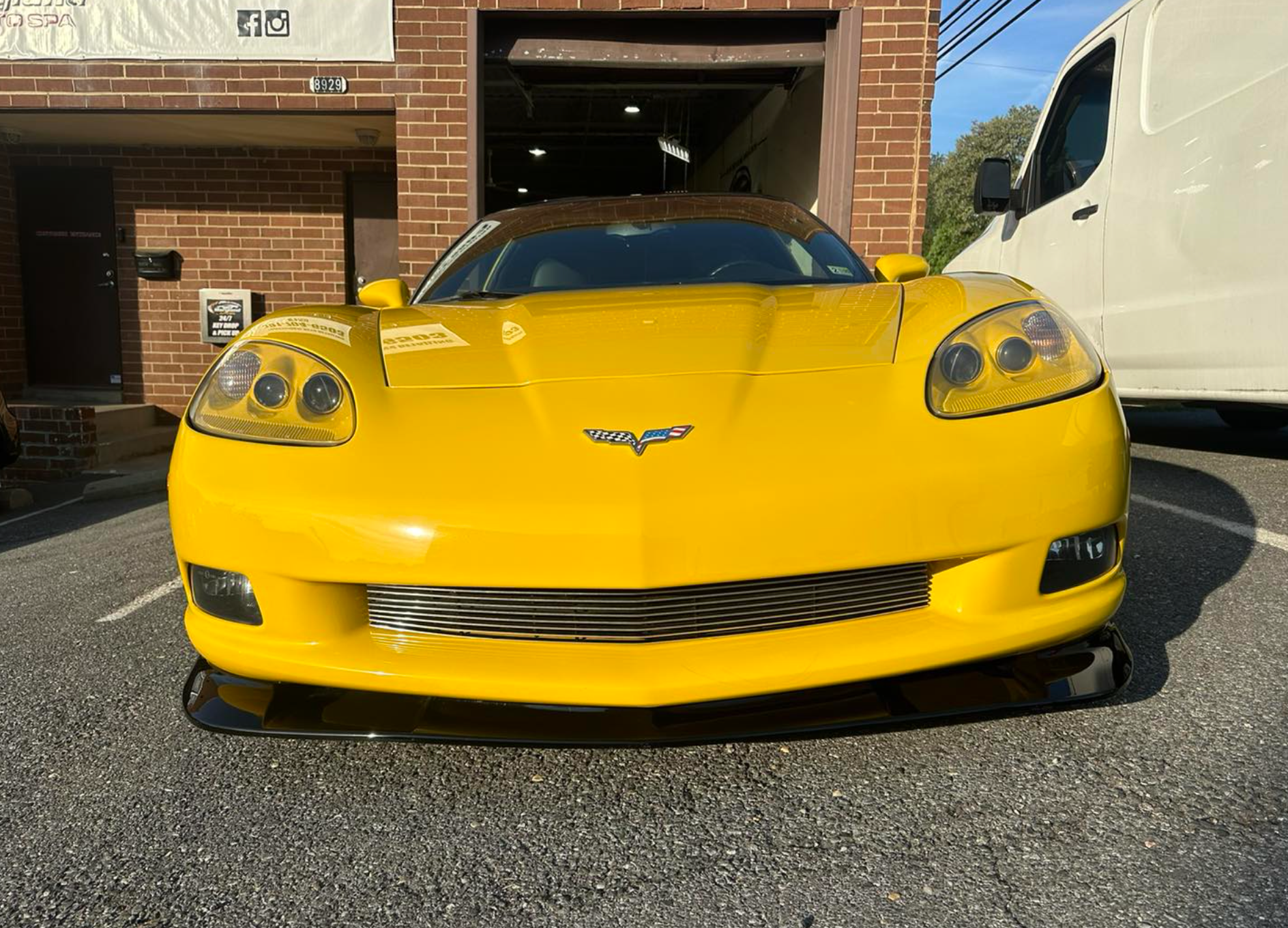Most car owners want to keep their cars looking their best, but with the weather, everyday wear and tear, and the occasional misplaced key scratch, it can be difficult. Fortunately, there's
paint correction and restoration, two powerful tools in the car owner's arsenal when it comes to keeping their car looking new. But what exactly are paint correction and restoration, and how do they work? This guide will break down the basics of paint correction and restoration and explain how these powerful processes can help you get the perfect finish for your vehicle. So read on to get clued up on the world of paint correction and restoration—you won't regret it!

What is Paint Correction?
Paint correction is the process of removing scratches, swirl marks, oxidation, and other defects from a car's paint to restore its luster and shine. The process uses abrasive products and/or specialized machinery to correct paint that has been damaged due to environmental factors, improper upkeep, or aging. It can also be used in place of traditional painting techniques to restore depth, gloss, and clarity to the car’s original paintwork.
We now understand why so many people have chosen to turn to specialized services like paint correction when looking for ways to boost their vehicle's aesthetic appeal. But what about those advantages beyond improved looks? In our next section, we'll explore exactly what kind of benefits paint correction offers beyond simple aesthetics.
The Benefits of Paint Correction
When discussing the benefits of paint correction, it is important to consider the overall outcome that it delivers. Paint correction can revive a vehicle's exterior to look like new, restoring both the original color and light reflections for an improved shine. This kind of restoration typically restores the vehicle’s value and aesthetic appeal, along with its durability in terms of being more resistant to certain weather elements, for example. Additionally, minor and sometimes major flaws, such as damage from bug splatter or swirl marks from lack of care and/or damage from improper washing, can be removed or reduced significantly by using specialized methods of polishing that go much deeper than any standard waxing.
For many drivers and car enthusiasts alike, ensuring their vehicles look pristine inside and out is a priority, regardless of how long they have owned them. Having professional services done, such as paint correction, can guarantee there won’t be extensive wear and tear on one’s car. While others may argue about the cost involved in acquiring these services, some may suggest that investing a bit more initially is worth it if it prevents the need for more costly repairs in the future.
Let us move on to learning more about how a flawless finish can be achieved through this process.
A Flawless Finish
A flawless finish is often the desired outcome of paint correction and restoration. While a perfect finish may seem impossible, with the right tools and techniques, it can be achieved with few sacrifices. There is a great debate over the merits of paint correction versus the use of waxes and sealants, as each provides its own unique results.
While there are advantages to both methods, neither is “right” nor "wrong," as personal preference comes into play when determining which route to take when maintaining a vehicle's paint job. Regardless of which path an individual chooses, the end result is always a smooth finish that beautifies their vehicle for years to come. With this in mind, embarking on a paint correction and restoration journey requires preparation to ensure all steps are covered in order to unleash those mesmerizing shades of shine and reflection from beneath layers of dirt and grime.
- Paint correction can improve the appearance by up to 90% or more in a single session.
- Paint correction can also extend the life of a car’s paintwork by preventing scratches and other damage.
- A study published in 2018 showed that applying wax after a paint correction increases shine and performance for up to 2 years.
The Process of Paint Correction
When it comes to paint correction, it is important to take a methodical approach. This helps ensure that the job is done right and that no further damage is caused. There are three key steps in the process of paint correction: cleaning, polishing, and protection.
First, the surface must be cleaned extensively. Using a specialized cleaner or clay bar, dirt, and debris are removed from the surface as gently as possible so that any contaminants don’t scratch or otherwise damage the paint.
The second step is polishing. This involves using polishing compounds to remove imperfections such as scratches, swirls, and oxidation while restoring the shiny finish of the paintwork. The type of compound used depends on the level of defects present in the paintwork and can range from ultrafine abrasives for minor defects to more aggressive compounds for deep scratches or swirl marks.
Finally, protection must be applied. A sealant such as wax or ceramic coating provides protection from both environmental elements and contamination such as dust and dirt, which can cause further damage to the paintwork over time if left unchecked.
Once these steps have been completed, you should have a flawlessly finished automotive exterior. It's now time to move on to address more specific cosmetic imperfections such as scratches and swirl marks, which require more targeted care to achieve optimal results.
Removing Scratches & Swirls
In the process of paint correction, the removal of scratches and swirls is a common goal. This is done through a combination of surface preparation techniques, such as wet sanding and compounding. Scratches and swirls may be too deep to be removed by buffing alone, so a more aggressive approach may be necessary.
Ultimately, proper surface preparation by removing scratches and swirls is key to achieving great results in paint correction tasks. Once these unsightly imperfections have been successfully addressed with either compounding or polishing, it's time to move on to the next step in paint restoration: surface preparation and compounding. These necessary processes serve as the foundation for removing deeper imperfections such as oxidation and etching, which require more aggressive techniques.
Surface Preparation & Compounding
Once the surface has been cleansed and the deeper scratch and swirl damage remedied, it's time for serious paint correction work. Before any compound application can be made, preparation is critical. This means making sure that the paint is free from dirt and dust that could cause additional scratching from the abrasive action of the compound. The dirtiest areas usually require clay bar detailing in order to get the desired clean results.
Compounding is an integral part of the paint correction process. Compounds are liquid abrasives designed to correct defects such as scratches and oxidation that can't be removed by claying or polishing alone. Car enthusiasts have long debated which compounds offer the best results with the least amount of effort and the fewest refinements required afterward. Some swear by synthetic “sealant-grade” compounds, while others prefer traditional abrasive compounds like those used by professional detailers.
The reality is that both types of compounds offer different results and different grades of cutting power, so it really comes down to what kind of defect needs to be addressed and how much effort one wants to put into achieving a swirl-free finish. In general, consistently honing at low speed with high-quality compounds will yield the desired results. The thickness of paint on various surfaces may also need to be taken into account when deciding which type of compound is best suited for a project.
No matter which compounds you choose, the proper amount and pressure must be applied in order for it to work correctly. Excessive compounding can strip away protective clear coats and even damage fresh paint, so it’s important to carefully gauge how many passes your surface needs before transitioning into polishing for further refinement.
Polishing & Final Coatings
Polishing and final coatings can take place after the surface preparation and compounding have been finished. This step is used to refine and bring out the maximum clarity and gloss of the paint. Generally, this involves an abrasive polish, which will remove a minute layer of the clearcoat in order to erase any fine marring caused by compounding. Afterward, the paint should look much better and be noticeably smoother than before.
There are differing opinions on whether or not polishing is necessary for all paint correction jobs. Those in support of always using polishing argue that it often helps to restore depth, clarity, and gloss that compounding alone may not necessarily restore. It can also make a huge difference in difficult cases where there is deep marring that has penetrated through the clear coat into the base coat. Polishing will help make these imperfections virtually disappear. On the other hand, some maintain that it is unnecessary and potentially harmful since aggressive polishing can leave swirls or other defects if used incorrectly.
Ultimately, polishing should only be done after carefully assessing the condition of the paint and deciding if it is necessary. If so, then be prudent when selecting the right polishes and buffing pads to avoid potential damage such as holograms or burns. Following this step, a sealant or wax may be applied to protect the paint while also providing additional shine and protection from environmental elements.
Now that you understand what goes into proper paint correction techniques, you need to know about the different types of tools used for these services. These range from basic painter’s foam blocks to sophisticated dual-action polishers and rotary buffer machines—each with its own unique benefits and purposes depending on the particular job at hand.
Types of Tools Used For Paint Correction
When it comes to certain types of car detailing jobs, having the right tools and materials on hand is essential to achieving fantastic results. Professional detailers are usually equipped with the most advanced equipment based on their climate and environmental conditions, and the specific detailing job at hand. The tools used for paint correction involve a combination of abrasive polishes, buffer pads, and some inexpensive accessories.
For personal detailers, a few inexpensive options are available as well. Hand-held orbital buffers are great for light applications because they allow the operator to adjust speeds and polishing pressures. This tool provides very effective yet gentle compounding that can remove minor scratches and swirl marks from the clear coat. Clay bars are also essential for removing embedded contaminants from the surface that may not be visible when looking at the paintwork.
Chemical compounds formulated with abrasive particles provide detailers with an effective way of restoring oxidized paintwork as well as removing paint contamination such as tar, tree sap, and overspray. Multiple grades of the compound should be used depending on the severity of the damage, in order to minimize potential burning or haze marks on the paintwork.
When to Repair vs. Refinish Paintwork
When it comes to repairing paintwork, there is often much debate about whether a full refinish is needed or if paint correction alone will do the job. For those who are unfamiliar with either option, standard repair involves addressing any cosmetic issues the surface may have, including scratches and other blemishes, with polishing, waxing, and sealant applications. Refinishing works to either completely restore existing paintwork or replace it altogether.
When deciding what is best for your own situation, the condition of the paint is arguably the most important factor. If your vehicle is only exhibiting minor changes in gloss or small scratches or chips, then restoration techniques such as compounding and polishing can often be used to effectively address these issues. However, if the damage goes beyond normal wear and tear, such as major deep scratches or clear coat failure, then a full repaint may be more effective.
It's important to remember when considering whether to repair or refinish paintwork that no two cars are alike, and no two owners have the same tastes or aesthetic goals. Thus, ultimately, the decision should be based on your own preferences and budget limitations while also taking into consideration factors such as the severity of the damage and the desired outcome.
Final Words
Ready to restore the luster of your vehicle's paint? Contact Maryland Auto Spa today at (301) 704-6503 to
schedule your professional paint correction service. Our skilled technicians use advanced techniques and cutting-edge equipment to correct paint imperfections such as swirl marks, scratches, oxidation, and fading, leaving your vehicle's finish looking flawless and showroom-ready. Whether your car's paint has been damaged by environmental factors, road debris, or improper care, our team has the expertise to bring it back to life. Don't settle for dull, damaged paint. Call us now and experience the difference between our paint correction services. Your car deserves to look its best, and we're here to make that happen.




